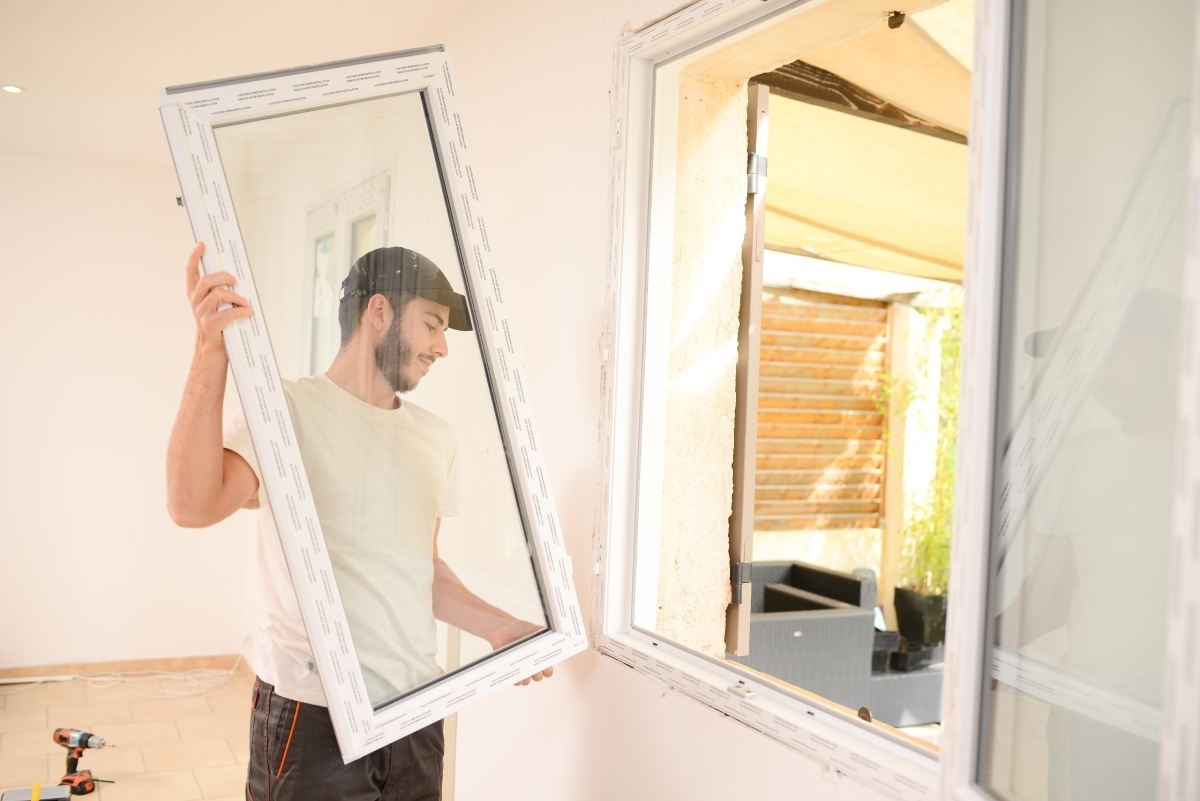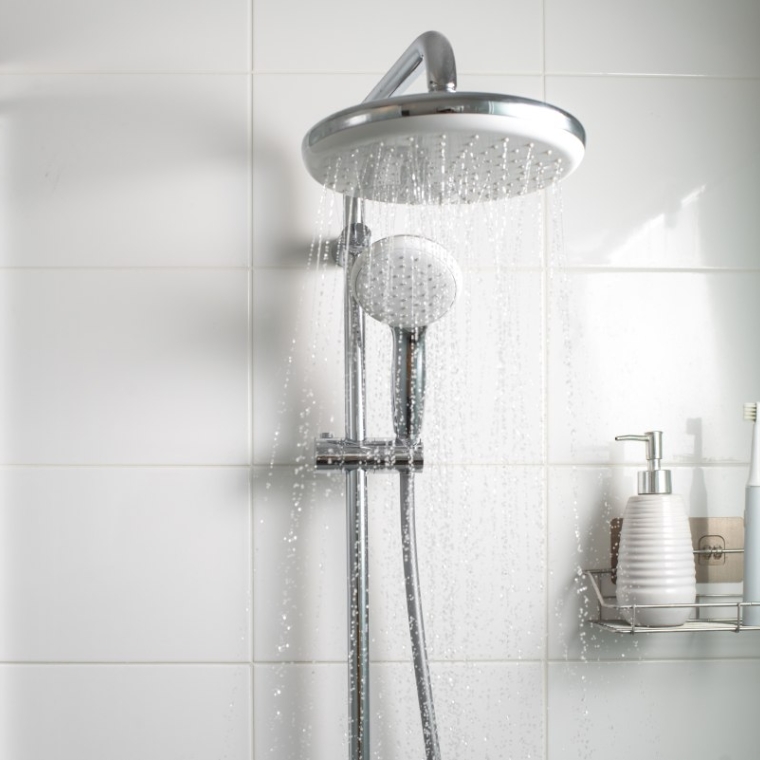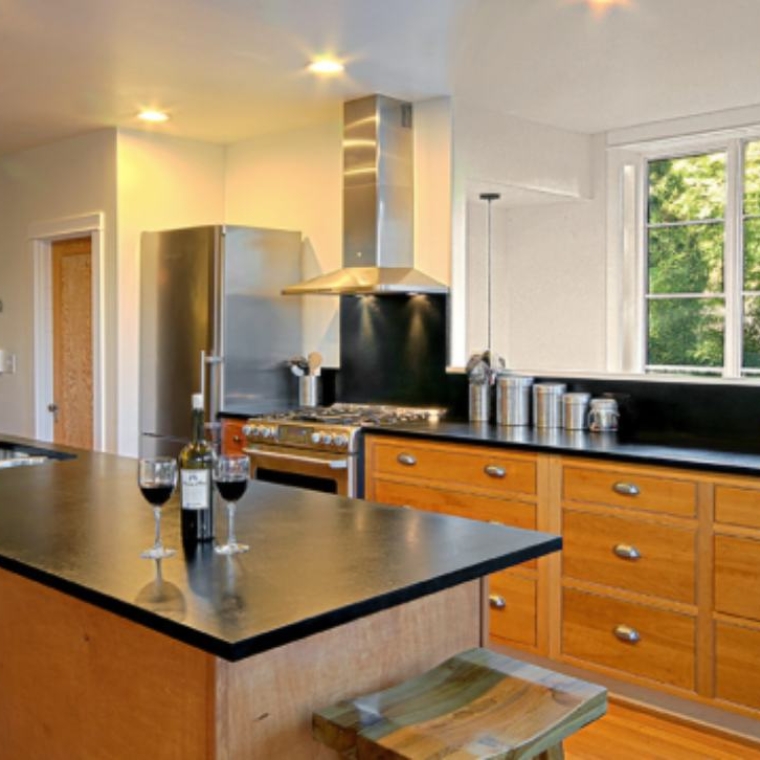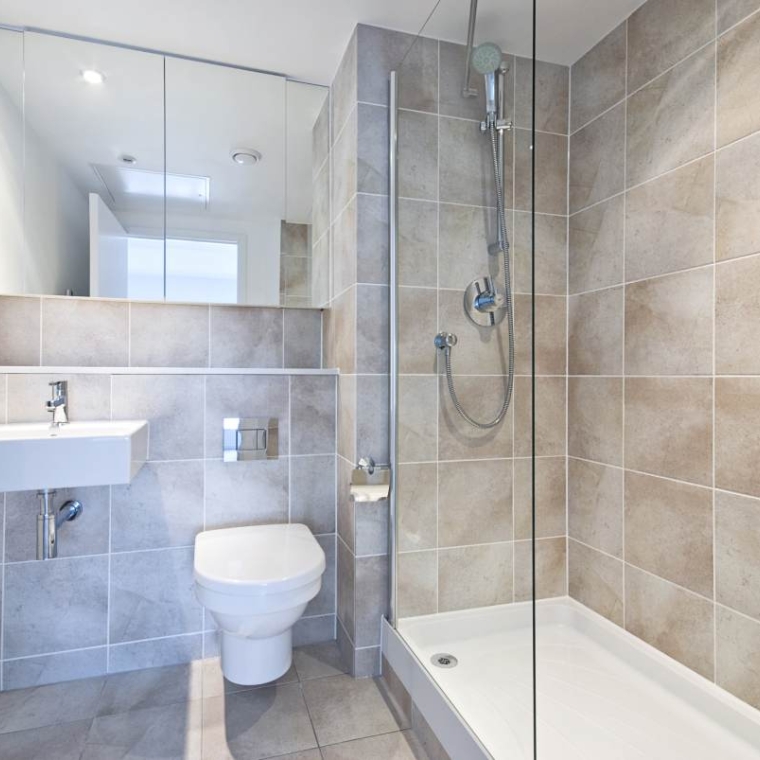Window Replacement
2024 Guide to Window Replacement Cost
- Window Replacement Cost Overview
- What Affects Window Replacement Cost?
- Window Replacement Cost by Style
- Frame Material Cost
- Window Glass Types Cost
- Window Brands
- Window Pros Near You
- FAQs
Average Window Replacement Cost: $234–$1,224 per window
The price of windows can vary widely, depending on factors like material, design, and brand. Standard windows may cost between $300 to $1000, while specialized designs and high-end materials can increase the price to as much as $5000.
For a personalized estimate tailored to your project utilize our windows replacement cost estimator tool for detailed cost insights, or read this guide.
Get a Free Estimate For Your Windows Replacement Project!
Get QuotesWindow Replacement Cost Overview
The cost to replace a window can span a broad spectrum, typically ranging from $234 to $1,224, with an average window replacement cost sitting near $729.
The price you'll encounter will largely hinge on choices in window style, the materials used, and the type of glass—factors that can adjust your costs by hundreds or even thousands of dollars.
To offer credible insights, we've analyzed market trends and product performance instead of conducting surveys. This approach – the MyGreenHome HomeVision Study - includes examining industry reports and customer reviews.
In our comprehensive analysis, we've assessed how style, material, glass type, brand, and energy efficiency, along with installation, contribute to the average window replacement cost.
We discovered that opting for a vinyl, double-hung window equipped with insulated, double-pane glass strikes a balance between affordability and performance. This choice presents a cost-effective solution without sacrificing significant ROI.
Our guide delves into the price variances and provides insights on how these common cost determinants shape the window cost. We also highlight which leading window brands offer the most value. Meanwhile, a window cost estimator can assist in budgeting for new window cost or cost for window replacement.
Recommended Window Type
When selecting windows, it's crucial to weigh not just affordability but also aesthetics and energy efficiency.
For those prioritizing cost above all, a single-hung window with aluminum framing and single-pane, non-insulated glass stands as the most budget-friendly choice. These windows are a traditional pick due to their straightforward design and ease of installation.
Aluminum frames offer a cost advantage, and the single-pane, non-insulated glass is less complex, thus more affordable. However, they fall short on energy efficiency.
On the other hand, for a mix of value and performance, a double hung window made of vinyl with double-pane, insulated glass is recommended. This window type enhances energy efficiency without significantly escalating costs.
Here's a quick guide to understanding your options:
| Factor | Most Affordable | Most Aesthetic | Most Energy-Efficient |
|---|---|---|---|
| Style | Single-hung window | Bay window | Picture window |
| Material | Aluminum | Wood | Fiberglass |
| Glass | Single-pane, non-insulated | Frosted | Triple-pane, insulated, low-e coated |
What Affects Window Replacement Cost?
MyGreenHome’s HomeVision Study found that a significant number of homeowners (more than 63%) find the cost of window replacement manageable, with a notable percentage spending $500 or less for each energy-efficient window.
Those opting for a standard-size, double-pane, double hung window saw prices as friendly as $147, showcasing the affordability of best insulated windows. Yet, for larger or more complex designs, the investment can climb significantly.
Variations in pricing are influenced by several key factors:
- Window style
- Material used in the window's construction
- Type of glass
- Brand choice
- The energy efficiency of the windows
- Installation labor costs
- The total number of windows being replaced
How Much Does Window Replacement Cost by Style?
Window styles are more than just an aesthetic choice—they define the functionality and feel of your home. If you're living in an older property, single-hung windows might be the norm, but modern homes often favor double windows.
Should you be contemplating a new look or need to replace a unique window, here’s what you might expect to pay for popular window types:
| Window Type | Price per Window |
|---|---|
| Arched | $273–$1,675 |
| Awning | $395–$1,100 |
| Bay and Bow | $910–$6,750 |
| Custom | $405–$1,125 |
| Casement | $315–$1,825 |
| Double-Hung | $147–$950 |
| Egress | $270–$674 |
| Glass Block | $54–$683 |
| Picture | $237–$1,750 |
| Single-Hung | $107–$1,800 |
| Skylight | $135–$1,625 |
| Sliding | $310–$1,575 |
| Storm | $64–$445 |
| Transom | $330–$690 |
* All data is derived from RSMeans Data from Gordian
To pick the right window style, consider these points:
- Is aesthetics or energy efficiency more important to me?
- Do I need my window to open? Which way should it open?
- How much sunlight do I want to let in?
- What window size suits my space?
- What type of window will serve each room best?
Each window type has its characteristics:
- Arched: A statement piece, they have a rounded top and don't open.
- Awning: Hinged at the top, they open outward, allowing airflow without the rain.
- Bay and Bow: Protruding designs that invite
- Custom: Tailored to your unique needs and style, the function will vary.
- Casement: Operate with a crank, swinging open to the side, perfect for airflow in kitchens and baths.
- Double-Hung: Versatile and common, these open from both top and bottom, ideal for most rooms.
- Egress: Designed for safety, these windows provide an escape route in emergencies.
- Glass Block: Offering privacy and light, they're often found in bathrooms.
- Picture: Fixed and expansive, they frame views and maximize light but don't open for airflow.
- Single-Hung: Traditional, with a movable lower sash for ventilation, often used on the ground floor.
- Skylight: Mounted in the ceiling, they brighten interiors with natural light from above.
- Sliding: Glide open horizontally, great for spaces where swinging windows won't fit.
- Storm: Added over existing windows for extra protection and insulation.
- Transom: Decorative or functional, these sit above doors or other windows.
Frame Material Cost
The material of your window frame is a key player in defining the look, energy efficiency, and maintenance level of your windows.
Popular materials include aluminum, composite, fiberglass, vinyl, and wood, each with distinct pros and cons that are reflected in their price points.
- Aluminum ($64–$505): Strong and lightweight, aluminum frames support heavy glass with minimal bulk. Yet, they fall behind in energy efficiency and can be vulnerable to rust and corrosion.
- Composite ($650–$1,269): A mix of wood fibers and polymers, composite frames offer a balance of low-maintenance and energy efficiency, though quality can differ by brand.
- Fiberglass ($423–$1,587): For top-notch energy efficiency and customization options, fiberglass frames are excellent, though their higher cost may stretch some budgets.
- Vinyl ($219–$1,150): Vinyl frames lead in popularity due to their blend of durability, affordability, and ease of upkeep, despite lacking some aesthetic appeal.
- Wood ($325–$1,375): Wood frames excel in energy efficiency and visual charm but require more maintenance and are prone to weather-related issues.
Here's how these materials stack up:
| Feature | Aluminum | Composite | Fiberglass | Vinyl | Wood |
|---|---|---|---|---|---|
| Average Cost | $64–$1,800 | $$650–$1,460 | $107–$910 | $2,019–$2,025 | $325–$1,825 |
| Attractive | ✓ | ✓ | |||
| Durable | ✓ | ✓ | ✓ | ✓ | ✓ |
| Energy-Efficient | ✓ | ✓ | ✓ | ✓ | |
| Highly Customizable | ✓ | ✓ | |||
| Low-Maintenance | ✓ | ✓ | ✓ |
* All data is derived from RSMeans Data from Gordian
How Much Do Different Window Glass Types Cost?
When evaluating the cost of different types of glass for windows, consider both the number of panes and the specific glass treatments used.
There are generally three options for the number of panes in a window:
- Single-pane windows: These have a single layer of window glass.
- Double-pane windows: These feature two layers of glass window, often with gas fillings between panes for better insulation.
- Triple-pane windows: These include three layers of glass, providing maximum insulation.
Special glass treatments provide additional benefits:
- Frosted glass: Offers privacy while still letting in light.
- Laminated glass: Includes a layer of resin, making it much tougher than standard glass.
- Tempered glass: Provides superior protection against weather-related damage.
Choosing a more expensive glass type like multi-paned or glazed can offer better energy efficiency, which may reduce energy costs over time, yielding a higher return on investment (ROI).
For example, double-pane windows are popular for their balance of affordability and efficiency, fitting for most climates across the U.S.
These windows typically range from $219 to $1,950. In harsher climates, where extreme cold or wind is a factor, triple-pane windows are advisable for their added insulation and noise-reduction properties.
Here's a breakdown of the average costs for each glass type:
| Glass Type | Average Cost |
|---|---|
| Single-pane | $31–$313 |
| Double-pane | $219–$1,950 |
| Triple-pane | $700–$1,050 |
| Frosted | $92–$627 |
| Laminated | $355–$865 |
| Tempered | $335–$595 |
* All data is derived from RSMeans Data from Gordian
Additionally, homeowners might consider glass with special coatings, such as low-emissivity (low-e) coatings, which help control heat transfer and block harmful UV rays, protecting your interior from sun damage. Although these windows can be 10%–15% more expensive, they reduce energy loss by 30%–50%.
Tinted windows are a more budget-friendly option that also blocks UV rays, akin to automotive tinting, but are designed to be subtle and not detract from your home's aesthetics.
In choosing your window glass, ask yourself:
- Do I need extra privacy?
- How important are additional safety features to me?
- Is noise an issue in my location?
- What aesthetic am I aiming for?
- What type of glass will perform best in my region's climate?
Remember, how much does it cost to replace windows with a particular glass type is not just about the upfront cost but also about long-term benefits and savings.
Most Affordable Window Brands
In reviewing various window brands, we found that their offers can differ significantly.
All brands offer free quote service, most of them a lifetime warranty and only some perks like free installation and no payments no interest for 12 months.
Here a table summarizing the most interesting offers from prominent contractors:
| Brand | Free Quote | Lifetime Warranty | Free Installation | No Payments No Interest for 12 Months |
|---|---|---|---|---|
| Reece Windows | Yes | Yes | Yes | No |
| Florida Window & Door | Yes | No | Yes | Yes |
| Replacement Window Center | Yes | Yes | No | No |
| Pella | Yes | No | No | Yes |
| Castle Windows | Yes | Yes | No | No |
How Much Do Energy-Efficient Windows Cost?
When considering a window upgrade, prioritizing energy efficient windows can be a wise financial decision in the long run.
Opt for windows that include features such as double or triple-pane glazing along with a low-e coating for the best energy performance. Low-e glass not only minimizes heat gain but also guards against interior fading by blocking harmful UV rays, all without compromising your view due to its invisible coating.
Investing in energy-saving technologies like low-e glass, argon gas fills, and triple panes is cost-effective and eco-friendly.
Most well-known window brands, being Energy Star partners, already embed these features into their products. Consequently, you typically won't find significant price disparities among brands for energy efficiency alone.
It's advisable to choose windows carrying the Energy Star label, ensuring they meet rigorous energy performance standards set for various U.S. climates as validated by the U.S. Environmental Protection Agency. The National Fenestration Rating Council independently assesses Energy Star products, rating their insulation and efficiency capabilities.
Energy Star emphasizes that their certified windows can reduce household energy bills by an average of 12% annually. Replacing old, single-pane windows with Energy Star-certified models could save you between $101 to $583 each year, while upgrading from non-certified double-pane windows could save $27 to $197 annually. Energy Star windows also feature clear energy performance ratings, aiding you in choosing the right fit for your home.
Specific performance needs can influence the cost. It's crucial to consult with a local window replacement expert to ensure you receive the right window for your area's climate, the window's placement, and functionality.
How To Save Money on Replacement Windows
Cutting costs on window replacements is achievable with a few savvy choices. The 2022 Inflation Reduction Act offers a helping hand, providing a federal tax credit for installing Energy Star-certified windows and skylights.
As per Energy Star, you could receive a credit covering 30% of installation costs, up to $600, for upgrades made to your main residence from January 2023 until December 31, 2032.
Don't miss out on additional savings by overlooking rebates and incentives from your local utility company, which are exclusive to Energy Star or other energy-efficient windows installed by professionals.
Window companies may also provide rebates. Further, some states have tax credits and rebates for energy-saving home improvements. For a comprehensive list of what's available in your area, the Database of State Incentives for Renewables and Efficiency (DSIRE) is an invaluable resource.
When selecting windows, opting for cost-effective styles like vinyl, double-hung windows can keep expenses in check. They may not match the visual appeal of wood or fiberglass but excel in energy efficiency and affordability.
Explore a brand's range for different price points: some areas in your home might only need a basic window, which could be sourced from a less costly line.
If a full upgrade to multi-paned windows isn't viable currently, we recommend considering window tinting as an alternative. Window tint offers many benefits of low-e glass by being applied to existing windows, allowing you to customize the amount of light and heat blocked according to your needs.
For more details on saving on your window replacement and to explore options that fit your budget, visit MyGreenHome’s window replacement cost guide.
Other Factors Affecting Window Cost
When tallying up your window replacement costs, some less obvious factors could also affect the final bill:
- Home age: Working on older homes can hike up labor costs due to non-standard window sizes or potential structural challenges that require additional work.
- Permitting: Check if your local regulations mandate a building permit for window installation, typically a small cost, usually under $50.
- Window location: If the windows are located on higher floors or in hard-to-reach places, the installation complexity—and cost—increases.
For the finishing touches on your window project, you might also need some accessories.
Based on averages from shopping at Home Depot, here’s what you could spend:
| Accessories | Average Cost Range |
|---|---|
| Blinds and window treatments | $30–$170 |
| Hardware | $10–$50 |
| Security bars | $35–$80 |
| Shutters | $50–$250 |
| Weatherstripping | $10–$40 |
| Window screens | $15–$80 |
| Window wells | $200–$380 |
Regarding installation methods, homeowners can choose between retrofit replacement and full-frame installation.
Retrofit replacements can trim costs by up to 20%, leveraging the existing frame and trim, and are ideal if these parts are still in good shape.
On the flip side, full-frame installations involve removing and replacing the entire window setup, which can double your expense but is necessary if the current frames and trim are damaged.
For additional details on when to schedule your installation for potential savings, learn the best time to install windows and make the most of your investment.
Find Window Replacement Professionals Near You
Embarking on a window replacement project requires careful consideration, not just of the types of windows you’d like but also of who will carry out the installation.
To ensure you make a well-informed decision that aligns with your budget and preferences, finding the right professionals is key.
For a straightforward way to estimate potential costs, a window cost estimator can provide you with an initial financial outlook. This tool helps set realistic expectations and aids in financial planning for your window replacement needs.
By doing so, you're not just buying new windows; you're investing in the comfort and efficiency of your home.
Ready to explore your options and connect with trusted professionals? Use this window cost estimator to get started, and take the first step towards enhancing your home today.
Get a Free Estimate For Your Windows Replacement Project!
Get QuotesFAQs Window Replacement
Window installation costs can vary greatly, depending on factors such as window style, material, and whether it's a full-frame replacement or a retrofit. On average, you can expect to pay between $300 to $700 per window, with prices going higher for larger or more specialized windows.
While it's possible to install windows yourself, it requires a certain level of skill and knowledge. If you're not experienced in home improvement projects of this nature, it's advisable to hire a professional to ensure proper installation, which is critical to the window's performance and durability.
Yes. Replacing windows can enhance your home's curb appeal, increase security, improve energy efficiency, and boost property value. If your current windows are old or damaged, replacing them can save you money on energy bills and maintenance in the long run.
The cost for a new window can range from $150 for a simple single-hung window to $1,200 or more for larger, custom, or specialized windows like bay or energy-efficient models. The material and glass type chosen will also impact the price.
Doing the job yourself can save on labor costs, which typically range from $100 to $300 per window. However, without the right tools and expertise, you risk improper installation, which can lead to increased costs due to energy loss, water damage, or the need for a professional redo.
A double hung window features two sashes that slide vertically up and down in the frame. They can be opened from the top or bottom, but they remain inside the frame so they don't protrude out to the exterior or interior of the house. This style is popular for its classic look and ease of cleaning and maintenance.
Related Resources
Window Repair: Your Complete Guide [2024 Costs, Types, and DIY Hacks]
Smart Homeowner’s Guide To Affordable Window Replacement Cost
Best Time to Install Windows for More Savings [6th is a Secret]
Demystifying Green Window Replacement: Step-By-Step Guide
What Are Replacement Windows: Full Guide And Window Pros Near You
Discover the Pros and Cons of Double Pane Windows for Your Home
Last update: 31 Dec 2025













